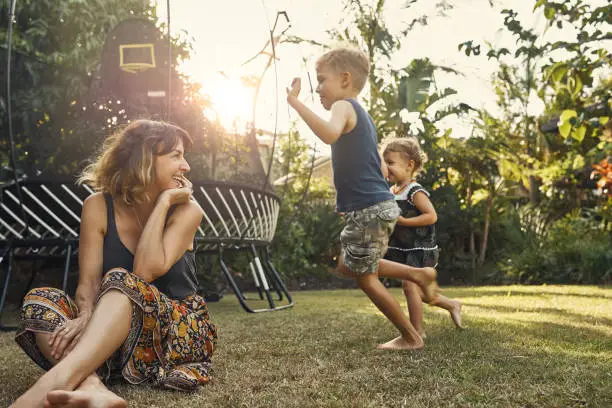Tumbles and Triumphs: Keep Playtime Safe Without Holding Children Back

“This is why I don’t let my kids play rough!”
Sound familiar?
The children are having fun and loving it at a birthday party—running indoors and outdoors, crawling under tables, squealing with laughter. Then, one trips and falls. A parent gasps. Another rushes over, looking fearful.
For many parents, playtime can feel like a tug between fun and fear. Especially when it gets physical—climbing, chasing, or tumbling—our instinct is often to stop the play in its tracks. But should we?
The truth is: physical play is not only normal—it’s necessary. And with a bit of planning, it can be safe too.
Why Physical Play Matters
Physical activity is vital for healthy development. According to the American Academy of Pediatrics, active play supports children’s:
- Bone and muscle strength
- Coordination and balance
- Emotional and social skills
- Confidence and resilience
Dr. Mariana Brussoni, a researcher in child injury prevention, emphasizes the importance of risky play—the kind that involves climbing, rough-and-tumble games, or exploring new environments. She states that such play makes children safer in the long run by teaching them how to assess and manage risks themselves.
So, how can we help them grow without wrapping them in bubble wrap?
1. Set the Scene for Safe Play
Whether indoors or outdoors, start by prepping the play space:
- Indoors: Secure heavy furniture to walls, add non-slip rugs or mats for cushioning, and clear space for movement.
- Outdoors: Use well-maintained play areas with shock-absorbing surfaces and clear boundaries.
- Play Equipment: In good working order, disinfected and well-maintained
Carefully safeguard every small space as a potential play area because children can turn a hallway, grassy patch, or backyard deck into imaginative play zones with a little creativity. Also, ensure materials are age-appropriate and free from choking hazards.
2. Be an Active Observer
You don’t need to hover. Instead, engage and constantly supervise, but step in only when necessary. Offer gentle guidance—not constant warnings—and cheer them on when they show smart decision-making.
3. Dress for Success
Wardrobe matters more than we think:
- Choose well-fitting clothes without long strings or loose parts.
- Footwear matters: Indoors, barefoot is often safer than slippery socks. Outdoors, opt for comfortable, snug shoes with secure grips
4. Teach Simple Safety Rules
Even toddlers can understand and remember basic playtime rules:
- “Walk when you're inside.”
- “Take turns.”
- “Use gentle hands.”
Repetition builds good habits and self-awareness.
5. Support Emotional Safety Too
Physical play often involves peers. Help your child practice:
- Speaking up
- Taking turns
- Including others
Feeling respected, seen, and included is just as essential as avoiding scrapes and bumps.
Reassuring Parents: It's All About Balance
Yes, your child might fall. They might get a bump or scrape. But they’ll also learn to stand back up, try again, and trust themselves.
By providing safe spaces, modeling calm support, and letting them explore, we’re giving our children more than just a fun afternoon—we’re giving them the freedom to grow.
So next time your little one turns the living room into a racetrack, take a breath. With care and confidence, you’ve got this.
🧠 Activity for Parents
Here’s a short True or False quiz to help you reflect on your comfort level with physical play and how you can support your child more confidently.
True or False:
- Keep children away from risky play such as climbing or rough-and-tumble games to ensure their safety.
- Proper footwear and clothing can reduce injuries during physical play.
- Parents should hover during playtime to prevent accidents.
- Limiting physical play can hurt a child’s emotional and physical development.
- Emotional safety is just as important as physical safety.
Answers:
- ❌ False – Risky play helps children learn how to manage danger.
- ✅ True – Proper clothes and shoes can help reduce mishaps.
- ❌ False – Observe actively, but give them room to learn.
- ✅ True – Physical play is linked to healthier development.
- ✅ True – Kids need to feel included, heard, and respected.
Reflection: Which statement made you pause? What’s one step you can take this week to support your young child’s active and safe play?
References
- American Academy of Pediatrics. (2018). The Power of Play: A Pediatric Role in Enhancing Development in Young Children. Pediatrics, 142(3).
- Brussoni, M., Olsen, L.L., Pike, I., & Sleet, D.A. (2012). Risky Play and Children’s Safety: Balancing Priorities for Optimal Child Development. International Journal of Environmental Research and Public Health, 9(9), 3134–3148.